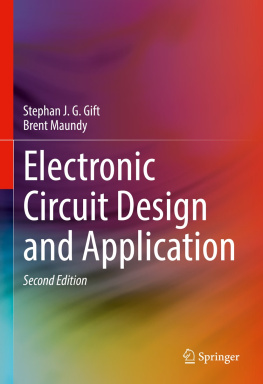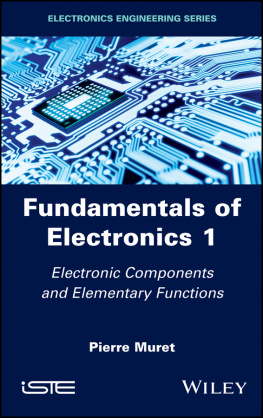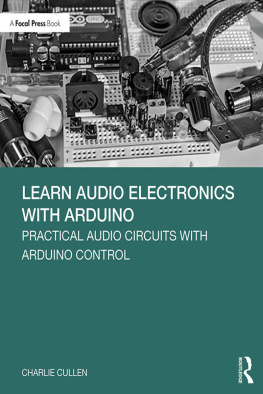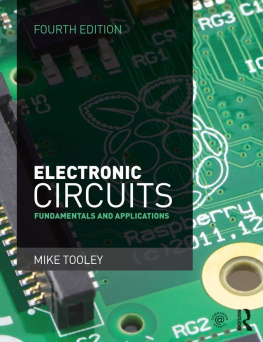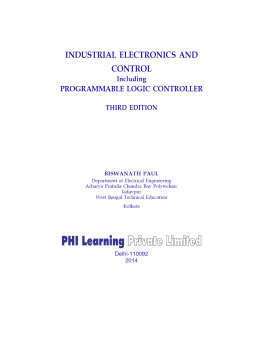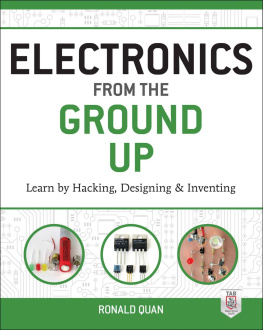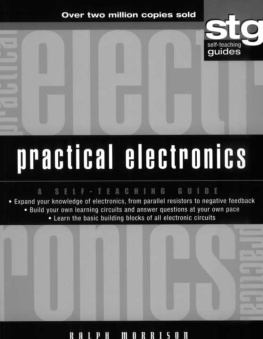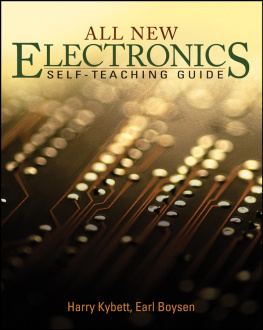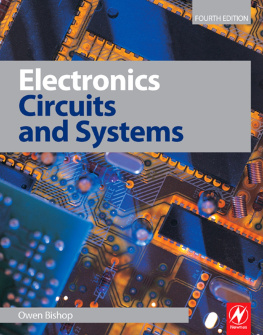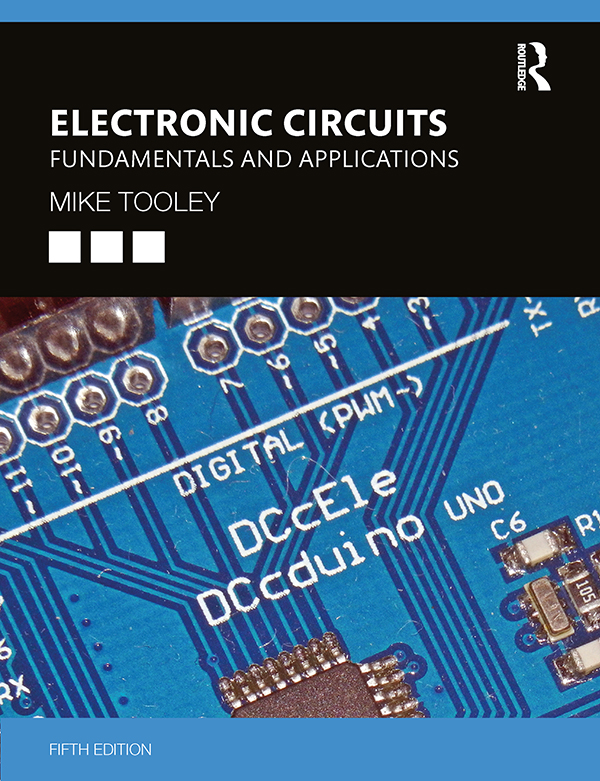
Electronic Circuits
Electronics explained in one volume, using both theoretical and practical applications.
Mike Tooley provides all the information required to get to grips with the fundamentals of electronics, detailing the underpinning knowledge necessary to appreciate the operation of a wide range of electronic circuits, including amplifiers, logic circuits, power supplies and oscillators. The 5th edition includes an additional chapter showing how a wide range of useful electronic applications can be developed in conjunction with the increasingly popular Arduino microcontroller, as well as a new section on batteries for use in electronic equipment and some additional/updated student assignments.
The books content is matched to the latest pre-degree level courses (from Level 2 up to, and including, Foundation Degree and HND), making this an invaluable reference text for all study levels, and its broad coverage is combined with practical case studies based in real-world engineering contexts. In addition, each chapter includes a practical investigation designed to reinforce learning and provide a basis for further practical work.
A companion website at http://www.key2electronics.com offers the reader a set of spreadsheet design tools that can be used to simplify circuit calculations, as well as circuit models and templates that will enable virtual simulation of circuits in the book. These are accompanied by online self-test multiple choice questions for each chapter with automatic marking, to enable students to continually monitor their own progress and understanding. A bank of online questions for lecturers to set as assignments is also available.
Mike Tooley has over 30 years experience of teaching electrical principles, electronics and avionics to engineers and technicians, previously as Head of Department of Engineering and Vice Principal at Brooklands College in Surrey, UK, and currently works as a consultant and freelance technical author.
Fifth edition published 2020
by Routledge
2 Park Square, Milton Park, Abingdon, Oxon, OX14 4RN
and by Routledge
52 Vanderbilt Avenue, New York, NY 10017
Routledge is an imprint of the Taylor & Francis Group, an informa business
2020 Mike Tooley
The right of Mike Tooley to be identified as author of this work has been asserted by him in accordance with sections 77 and 78 of the Copyright, Designs and Patents Act 1988.
All rights reserved. No part of this book may be reprinted or reproduced or utilised in any form or by any electronic, mechanical, or other means, now known or hereafter invented, including photocopying and recording, or in any information storage or retrieval system, without permission in writing from the publishers.
Trademark notice: Product or corporate names may be trademarks or registered trademarks, and are used only for identification and explanation without intent to infringe.
First edition published by Elsevier 1995 as Electronic Circuits Student Handbook
Fourth edition published by Routledge 2015
British Library Cataloguing-in-Publication Data
A catalogue record for this book is available from the British Library
Library of Congress Cataloging-in-Publication Data
A catalog record has been requested for this book
ISBN: 978-0-367-42199-1 (hbk)
ISBN: 978-0-367-42198-4 (pbk)
ISBN: 978-0-367-82265-1 (ebk)
Typeset in Univers
by Servis Filmsetting Ltd, Stockport, Cheshire
This is the book that I wish I had when I first started exploring electronics over half a century ago. In those days, transistors were only just making their debut and integrated circuits were completely unknown. Of course, since then much has changed but, despite all of the changes, the world of electronics remains a fascinating one. And, unlike most other advanced technological disciplines, electronics is still something that you can do at home with limited resources and with a minimal outlay. A soldering iron, a multi-meter and a handful of components are all you need to get started. Except, of course, for some ideas to get you started and thats exactly where this book comes in!
The book has been designed to help you understand how electronic circuits work. It will provide you with the basic underpinning knowledge necessary to appreciate the operation of a wide range of electronic circuits, including amplifiers, logic circuits, power supplies and oscillators.
The book is ideal for people who are studying electronics for the first time at any level, including a wide range of school and college courses. It is equally well suited to those who may be returning to study or who may be studying independently as well as those who may need a quick refresher. The book has 20 chapters, each dealing with a particular topic, and ten appendices containing useful information. The approach is topic-based rather than syllabus-based and each major topic looks at a particular application of electronics. The relevant theory is introduced on a progressive basis and delivered in manageable chunks.
In order to give you an appreciation of the solution of simple numerical problems related to the operation of basic circuits, worked examples have been liberally included within the text. In addition, a number of problems can be found at the end of each chapter and solutions are provided at the end of the book. You can use these end-of-chapter problems to check your understanding and also to give you some experience of the short answer questions used in most in-course assessments. For good measure, we have included 80 revision problems in .
At the end of the book you will find 23 sample coursework assignments. These should give you plenty of food for thought as well as offering you some scope for further experimentation. It is not envisaged that you should complete all of these assignments, and a carefully chosen selection will normally suffice. If you are following a formal course, your teacher or lecturer will explain how these should be tackled and how they can contribute to your course assessment.
While the book assumes no previous knowledge of electronics, you need to be able to manipulate basic formulae and understand some simple trigonometry in order to follow the numerical examples. A study of mathematics to GCSE level (or equivalent) will normally be adequate to satisfy this requirement. However, for those who may need a refresher or have had previous problems with mathematics, will provide you with the underpinning mathematical knowledge required.
In the later chapters of the book, a number of representative circuits (with component values) have been included together with sufficient information to allow you to adapt and modify the circuits for your own use. These circuits can be used to form the basis of your own practical investigations or they can be combined together in more complex circuits.
This latest edition brings the book up to date with coverage of several important new topics, including the use of digital storage and sound card oscilloscopes, HDL/VHDL modelling of large-scale logic systems and new chapters devoted to the popular and versatile Arduino and Raspberry-Pi microcontrollers.
Finally, you can learn a great deal from building, testing and modifying simple circuits. To do this you will need access to a few basic tools and some minimal testing equipment. Your first purchase should be a simple multi-range meter, either digital or analogue. This instrument will allow you to measure the voltages and currents present so that you can compare them with the predicted values. If you are attending a formal course of instruction and have access to an electronics laboratory, do make full use of it!
Next page

